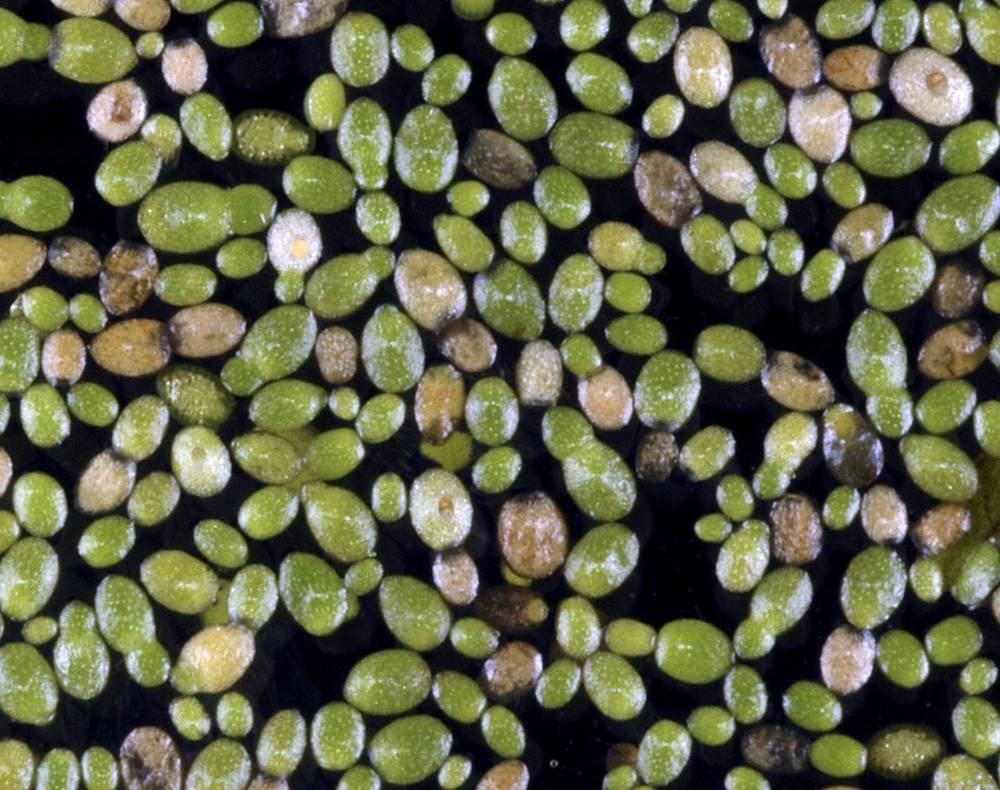
Plant bodies floating with entire upper surface above water, boat-shaped to ovoid, (0.5)0.7–1.2(1.6) mm long, 1–1.5 times longer than wide, in clusters of 2 or solitary, apex rounded, lower surface rounded, green; upper surface green, flattened with a central, conical papilla, stomata 50–100.
Pigment cells present and visible in dead plants as brown dots.
2n=20, 40, 42, 50, 60, 80.
Freshwater. 0–300 m. Est, Sisk, WV. CA, WA; eastern North America; South America. Exotic.
as described under Wolffia brasiliensis
Fronds boat-shaped, 0.5--1.6 mm, 1--1.5 times as long as wide, 0.3--0.7 times as deep as wide, rounded at apex, papilla usually prominent in center of upper surface (tent-shaped); upper surface intensely green, with 50--100 stomates; pigment cells present in vegetative tissue (visible in dead fronds as brown dots). 2n = 20, 40, 42, 50, 60, 80.Flowering (rare) late spring--early fall. Mesotrophic to eutrophic, quiet waters in temperate to subtropical regions; 0--1000 m; Ala., Ark., Calif., Conn., Del., D.C., Fla., Ga., Ill., Ind., Kans., Ky., La., Md., Mass., Mich., Miss., Mo., N.J., N.Y., N.C., Ohio, Okla., Oreg., Pa., S.C., Tenn., Tex., Va., Wash., W.Va., Wis.; Mexico; West Indies; Central America; South America.I know of no specimens of Wolffia brasiliensis from Rhode Island.